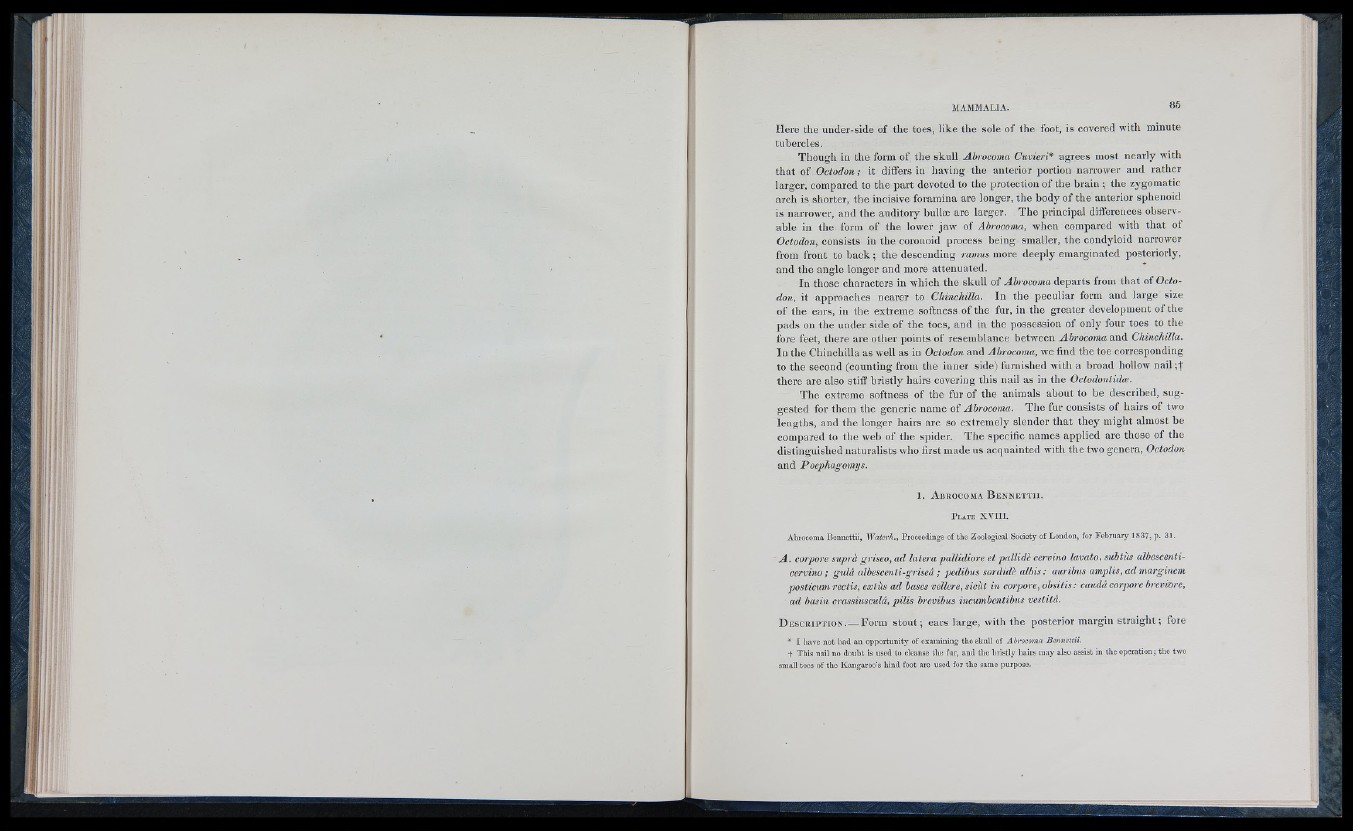
Here the under-side of the toes, like the sole of the foot, is covered with minute
tubercles.
Though in the form of the skull Abrocoma Cuvieri* agrees most nearly with
that of Octodou; it differs in having the anterior portion narrower and rather
larger, compared to the part devoted to the protection of the brain ; the zygomatic
arch is shorter, the incisive foramina are longer, the body of the anterior sphenoid
is narrower, and the auditory bullæ are larger. The principal differences observable
in the form of the lower jaw of Abrocoma, when compared with that of
Octodon, consists in the coronoid process being smaller, the condyloid narrower
from front to back ; the descending ramus more deeply emarginated posteriorly,
and the angle longer and more attenuated.
In those characters in which the skull of Abrocoma departs from that of Octodon,
it approaches nearer to Chinchilla. In the peculiar form and large size
of the ears, in the extreme softness of the fur, in the greater development of the
pads on the under side of the toes, and in the possession of only four toes to the
fore feet, there are other points of resemblance between Abrocoma and Chinchilla.
In the Chinchilla as well as in Octodon Abrocoma, we find the toe corresponding
to the second (counting from the inner side) furnished with a broad hollow nail ;t
there are also stiff bristly hairs covering this nail as in the Octodontidoe.
The extreme softness of the fur of the animals about to be described, suggested
for them the generic name of Abrocoma. The fur consists of hairs of two
lengths, and the longer hairs are so extremely slender that they might almost be
compared to the web of the spider. The specific names applied are those of the
distinguished naturalists who first made us acquainted with the two genera, Octodon
and Poephagomys.
1 . A b r o c o m a B e n n e t t i i .
P l a t e X V III.
Abrocoma Bennettii, Waterh., Proceedings of the Zoological Society of London, for February 1837, p. 31.
A . corpore suprà griseo, ad latera pallidiore et pallidè cervino lavato, subtùs albescenti-
cervino; gulâ albescenti-griseâ ; pedibus sordidè albis: auribus amplis, ad marginem
posticum rectis, extùs ad bases vellere, sicùt in corpore, obsitis: caudâ corpore breviore,
ad basin crassiusculâ, pilis brevibus incumbentibus vestitâ.
D e s c r i p t i o n . — Form stout; ears large, with the posterior margin straight ; fore
* I bave not had an opportunity of e.xaniinitig the skull of Abrocoma Bennettii.
t This nail no doubt is used to cleanse tho fur, and the bristly hairs may also assist in the operation; the two
small toes of the Kangaroo’s hind foot are used for the same purpose.
i i
|i